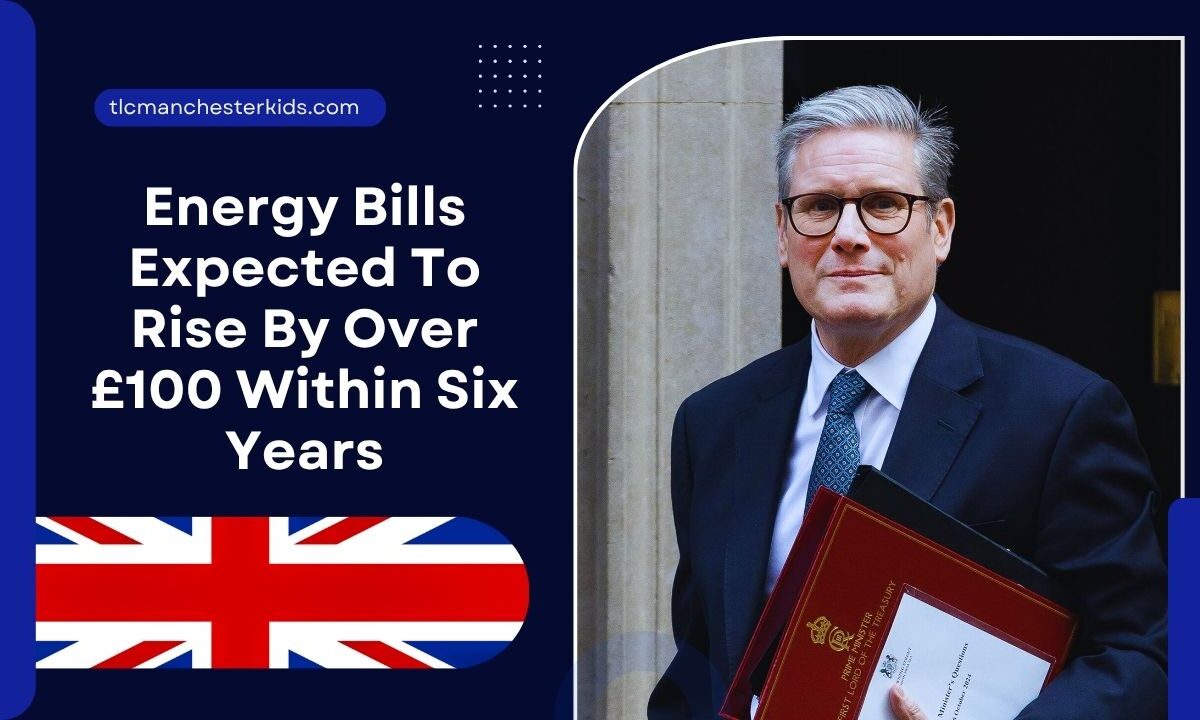UK households are being warned to prepare for an energy bill increase of over £100 annually by 2031, driven by a nationwide plan to modernize and expand the country’s aging energy infrastructure.
The increase comes as part of a major £24 billion investment package designed to future-proof the energy grid, enhance reliability, and support the transition to clean, renewable energy.
Here’s what’s happening, how much bills could increase, what changes are coming, and how you can stay ahead of the rising costs.
Why Are Energy Bills Rising?
The expected increase is due to a government-approved plan to overhaul the UK’s electricity and gas networks, involving:
- £15 billion to be spent on gas transmission and distribution networks
- £8.9 billion for upgrading the high-voltage electricity grid
- £1.3 billion allocated for additional critical projects
This is the largest expansion of the energy grid since the 1960s and includes over 80 major infrastructure upgrades to support the country’s push for renewable energy and improved resilience.
Breakdown of Projected Bill Increases by 2031
| Charge Type | Estimated Annual Increase |
|---|---|
| Electricity Grid Costs | £74 |
| Gas Network Charges | £30 |
| Total Increase | £104 |
While this increase may seem steep, regulators estimate that without this investment, households could face bills rising by an additional £30 or more due to inefficiencies, reliance on gas, and outdated infrastructure.
Net Cost to Households
Despite the initial increase, energy experts suggest that the net impact on bills will be just £24 per year (or about 40p per week) by 2031. This is because the upgrades will allow the UK to:
- Make better use of cheaper renewable energy sources
- Reduce dependency on volatile gas prices
- Improve energy system efficiency and stability
In short, spending now will help save more in the future.
What This Means for Consumers Now
At the same time, the energy price cap has recently been reduced. Here’s a snapshot of current and forecast energy prices for typical usage households:
| Payment Method | Current Annual Bill | Previous Bill | Change |
|---|---|---|---|
| Direct Debit (Price Cap) | £1,720 | £1,849 | -£129 |
| Prepayment Meter | £1,672 | £1,803 | -£131 |
| Pay on Receipt of Bill | £1,855 | £1,969 | -£114 |
| Forecast from October 2025 | £1,698 | – | -£22 |
While these reductions are a relief to many households, families are still paying far more than they were before 2022, and the upcoming £104 rise will affect long-term budgets.
Why the Investment is Necessary
This historic investment in energy networks will:
- Boost renewable energy connections (such as offshore wind and solar)
- Modernize the grid to handle electric vehicles and heat pumps
- Ensure greater protection from global energy price spikes
- Enable faster response times during outages or disruptions
- Improve long-term reliability and affordability
Energy leaders agree that doing nothing would cost consumers more over the next decade and beyond.
What’s Being Done to Control Costs?
To protect consumers, the government and regulators have included strict cost controls and performance requirements for network operators. If companies fail to deliver on time or go over budget, they face financial penalties or possible intervention.
The goal is to balance investment and affordability, ensuring consumers benefit from a more efficient and resilient energy system without shouldering unnecessary costs.
Tips to Keep Energy Bills Under Control
Even with rising charges, there are several ways to keep your household energy costs in check:
- Switch suppliers: Shop around for fixed-rate deals that may undercut the standard cap
- Submit meter readings regularly to avoid estimated overbilling
- Install energy-efficient appliances and smart thermostats
- Check if you’re eligible for energy support schemes, especially during winter
- Consider insulation or home upgrades through grant-funded energy-efficiency programs
These simple steps can help offset the impact of future bill increases.
With the UK committing to modernize its energy grid, energy bills are set to rise by over £100 annually by 2031. However, this investment is crucial to ensuring a reliable, greener, and more affordable energy future.
While the short-term costs may feel burdensome, the long-term rewards include better use of renewables, reduced volatility, and increased grid security.
For households, staying informed and taking steps to optimize usage and explore fixed-rate tariffs can help cushion the impact of these inevitable changes.
FAQs
Why are energy bills increasing when the price cap is falling?
While the price cap controls unit rates, the rise in infrastructure charges is separate and funds the modernization of the UK’s gas and electricity grids. These charges are built into bills and will rise gradually until 2031.
Is this increase permanent?
The £104 rise is projected based on planned infrastructure work through 2030. The increase is spread across several years and reflects long-term investment in energy reliability and sustainability.
How much will it cost me monthly?
The net increase is estimated at around £2 per month (or £24 annually) once infrastructure savings are factored in. This is considered a manageable amount compared to the benefits of improved energy resilience and efficiency.
